Hi River Roaders!
Gardeners pay attention to weather. We monitor rainfall (this year is six inches down compared to average), temperature (over two degrees warmer than average year-to-date) and humidity (will it be comfortable to work in the garden today).
Gardeners also pay attention to what’s happening on the ground. We see the results of the weather reflected in plant size and vigor. We see the results and payoff of prior year’s efforts, as many of our garden spaces now have well established plantings as a result of earlier transplanting and invasive control.
This month we’ll take a garden wonk’s tour of some of our gardens, focusing on the changes over the last couple of years.
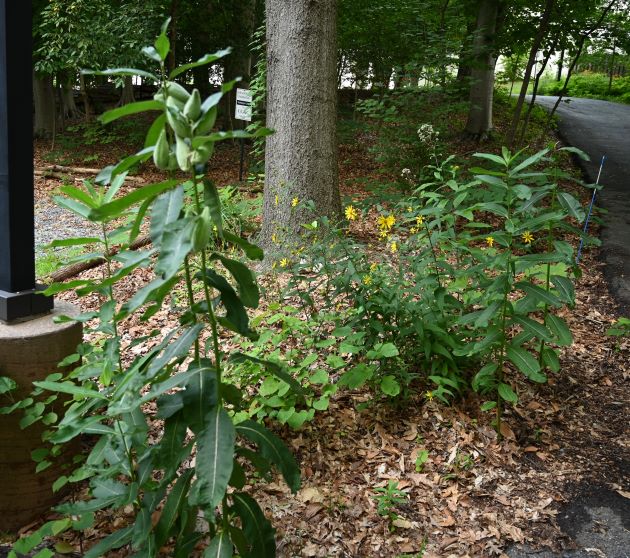
This small area on the upper left of the entry drive is one of my favorites. This area used to be dominated by a very large bush honeysuckle that we removed several years ago. For the last two years, we transplanted a number of divisions into this garden, including woodland sunflower, Joe Pye weed, and switchgrass. Redbud and viburnums joined the party as volunteers. The common milkweed was an original plant in the garden. This garden should continue to develop over the years.
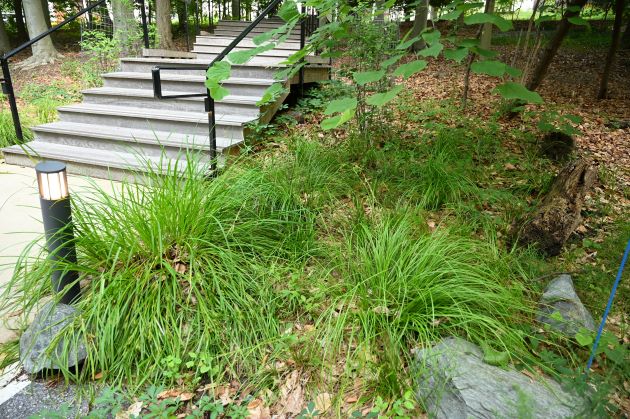
Another favorite is our “sedge garden” at the base of our upper path. We transplanted in Frank’s and Cherokee sedges which are both evergreen. Blue-eyed grass and soft rush showed up as volunteers. Sedges are getting trendy in gardening now – we were ahead of the curve.
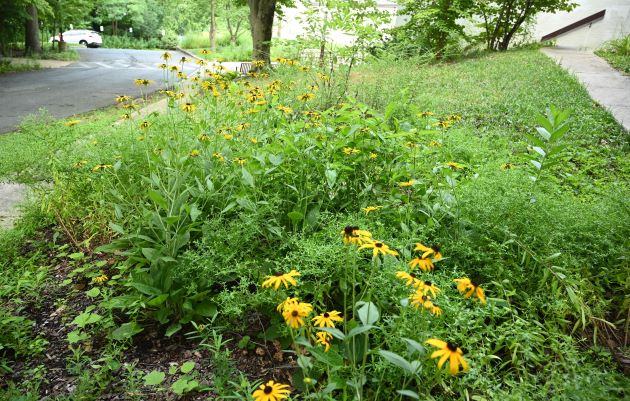
Thanks to the efforts of Linda, Kate, and Katherine, this back part of the Peace Pole garden is looking great! The black-eyed Susans planted last year are fully blooming. I’m looking forward to September when the aromatic aster and fireworks goldenrod bloom as well.

The front plaza butterfly garden shows the impact of our lack of rain. The swamp milkweed (pink flowers) is noticeably shorter than last year. Our initial planting was swamp milkweed, butterfly weed, mountain mint, and little blue stem. Last year volunteer blue mist flower and blue-eyed grass joined, and this year the white aster showed up.
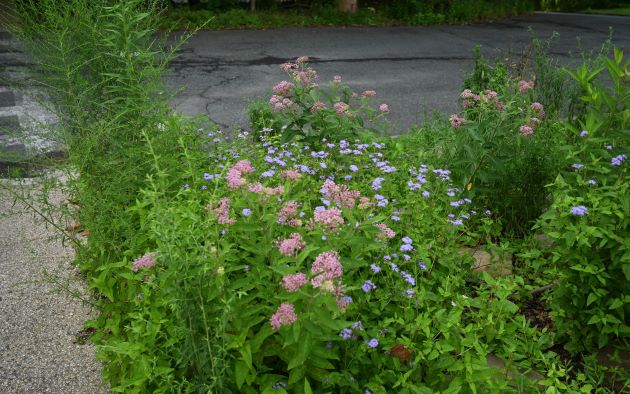
This small plot to the left of our front plaza is a happy accident. Almost every plant here is a volunteer. It’s a great example of what happens when you remove the invasives and there are seed-producing wildflowers nearby. Like the nearby butterfly garden, this plot has swamp milkweed, blue mistflower, and white asters.

Our newly resurfaced Fireside Plaza is looking great with the ostrich ferns planted below the river birches. Anyone remember the rows of hollies?
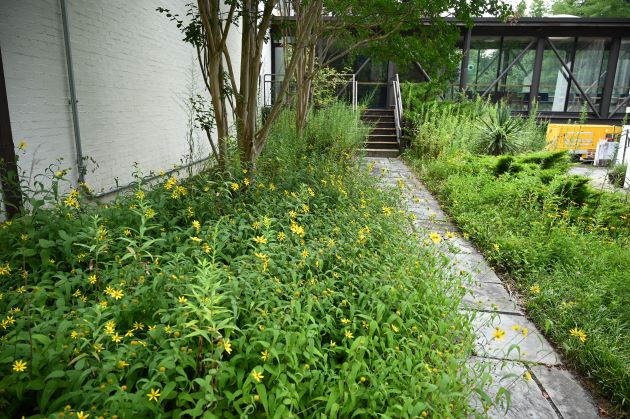
The bridge garden is a summer garden, with the woodland sunflowers blooming now, and goldenrods later this summer.
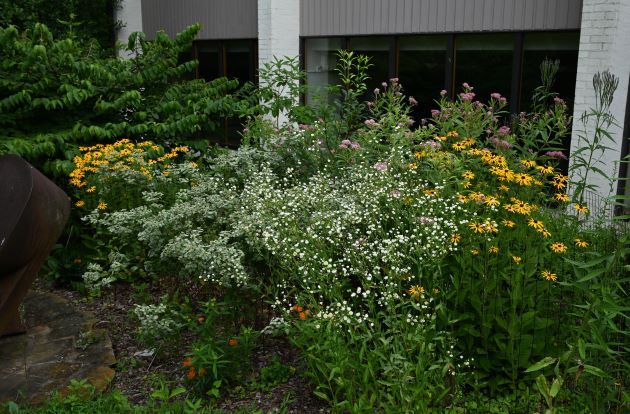
This new garden outside the Sanctuary windows is another pleasant surprise. Two years ago we cleared the area of invasives and transplanted in black-eyed Susans, mountain mint, swamp milkweed, and butterfly weed from on-site divisions. Last summer the garden was quite thin. Last fall we added blue lobelia, blue vervain, and woodland phlox obtained from a wildflower plant swap sponsored by Wild Ones. This summer it’s a burst of color.
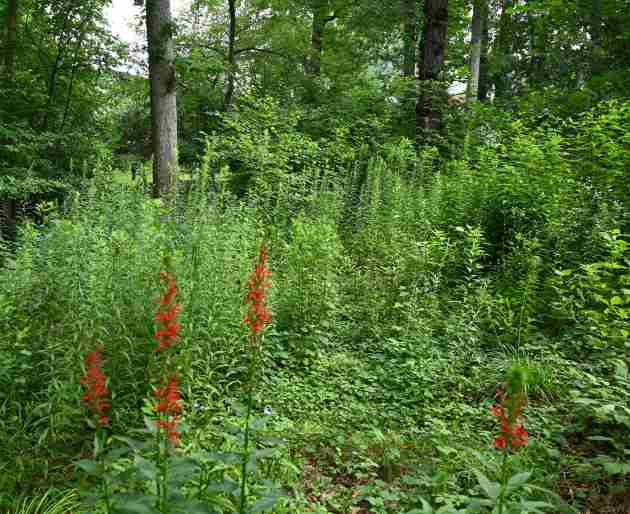
We’ll end our tour with the open area behind the Memorial Garden. While some flowers like the cardinal flower are blooming now, this garden will open up in the next month with blooms from goldenrods, sunflowers, coneflowers, ironweed, and more. I hope you’ve enjoyed this arm chair tour.
Joe
